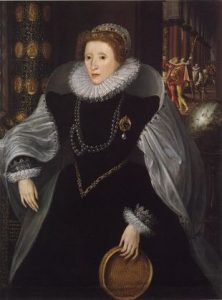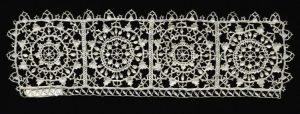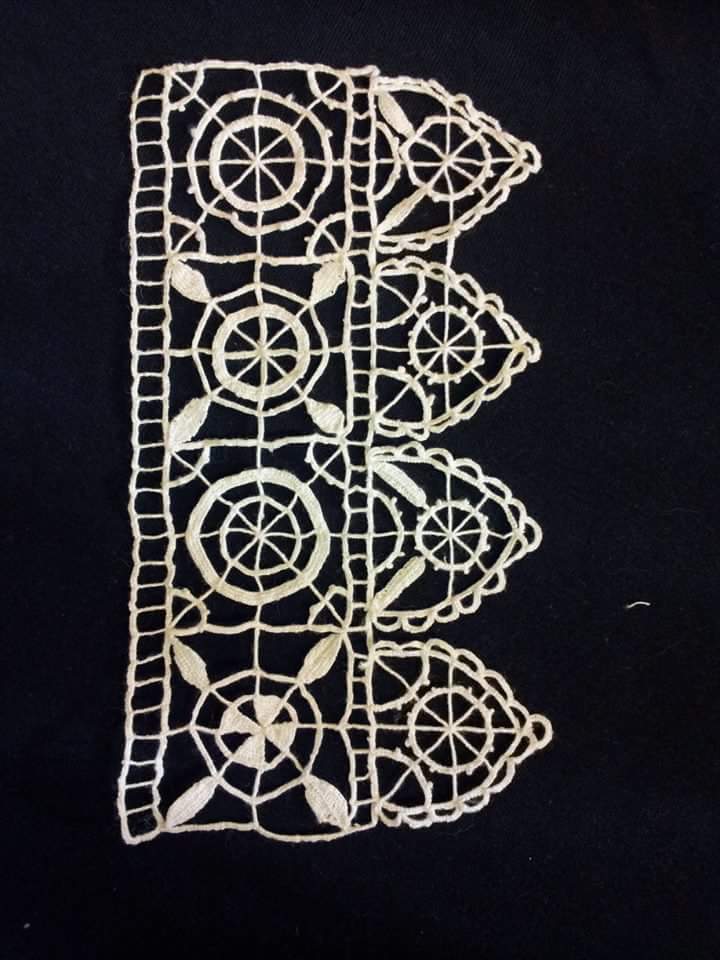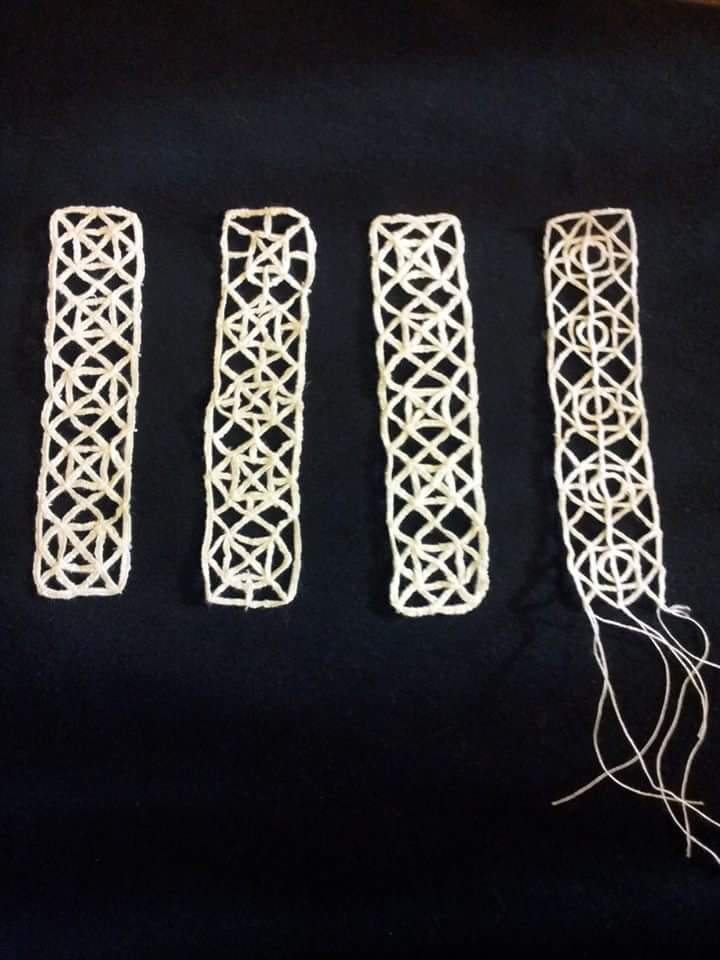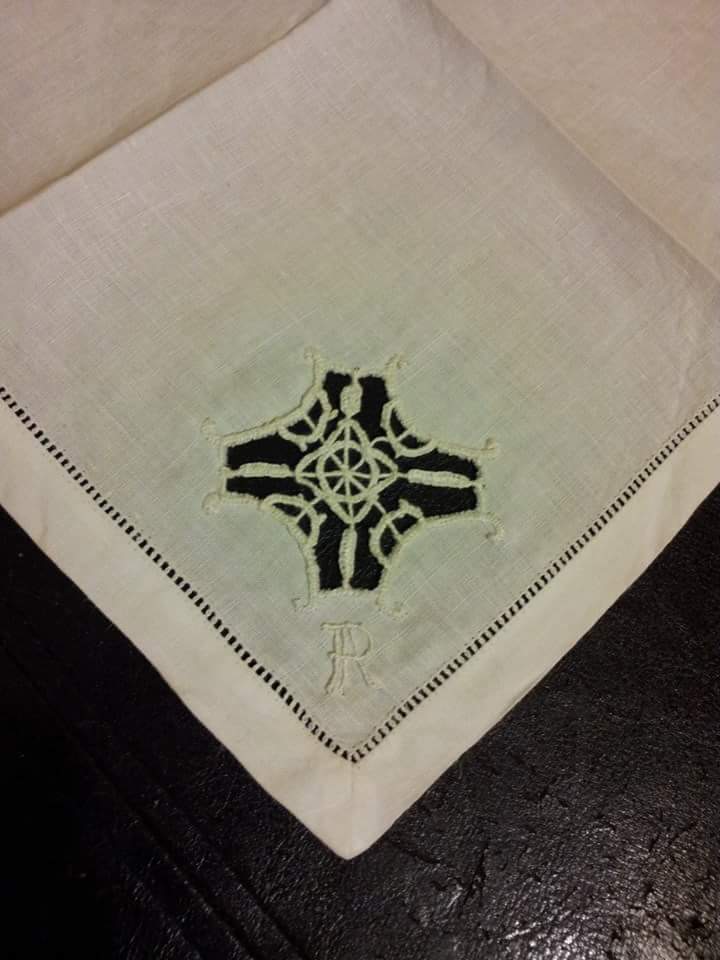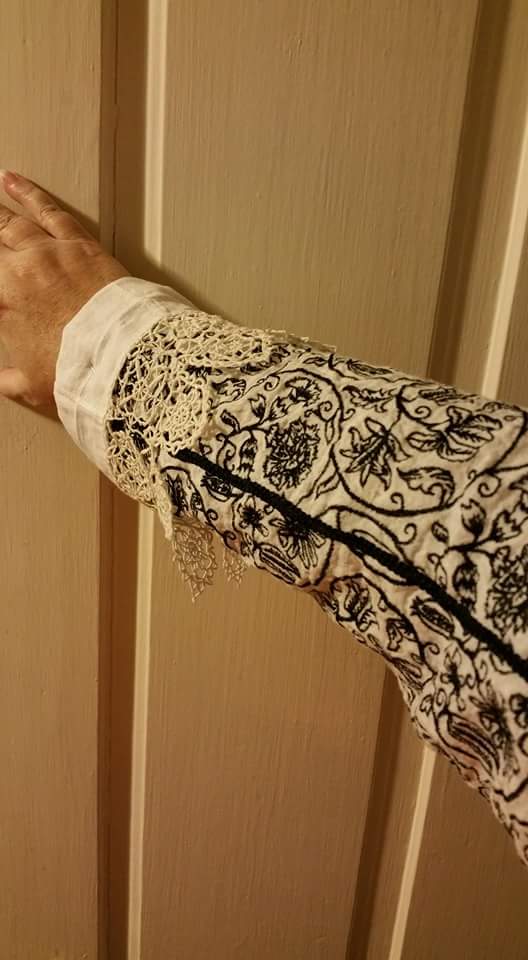By Baroness Leda Sand
In the early 1580s, turn back cuffs became a popular fashion accessory. Early in the decade they were paired with wrist ruffs (see Figure 1: Sienna Sieve portrait). By the end of the 1580s, wrist ruffs disappeared and the turn back cuff was established in its own right with its popularity continuing well into the 17th century (Arnold, Queen Elizabeth’s Wardrobe Unlock’d (QEWU), p. 31). Many portraits of Queen Elizabeth during this time show her wearing turn-back lace cuffs. Additionally, wardrobe warrants document that in 1594 silk woman Elizabeth Rogers provided the Queen “…fine holland Clothe edged with black and white silke bone lace and nedlework lace..” and the Lady Day warrant of 1595 lists “…two peire of ruffes and wrestbandes…” also from Elizabeth Rogers (Arnold, QEWU, p. 225).
The fashion for lace cuffs was not limited to the upper classes. By the end of Elizabeth’s reign prosperous merchants and elite artisans increasingly styled themselves in ways similar to the nobility (see Figure 2: portrait of John Vernon). An excellent example can be seen in the c.1610 portrait of John Vernon, Warden of the Merchant Taylors’ Company in 1599.
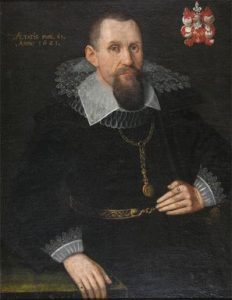
Figure 2 Circle of Sir William Segar, Portrait of a gentleman, half length wearing a lace collar aged 51, c. 1621.
The Lace
The story of needle lace begins in the early 16th century. Forms of whitework embroidery developed in which threads were drawn or small sections of fabric cut away to make open work designs. By mid century large sections of thread were pulled from the fabric and the resulting holes filled with needle work formed on the foundation of the remaining few threads. This form of extreme cutwork became known as reticella, meaning grid or net, from the grid of foundation threads used to work the lace (Cooper, Antique Lace, p. 35).
Punto in Aria (stitched in the air) is the first true needle lace. It began as edging for reticella. At the same time, as reticella became more elaborate, it must have become apparent that much fabric (and therefore money) was being wasted by cutting away and discarding much of that fabric. At this point, punto in aria started to be worked in its own right, and became the first free-needle worked lace (Cooper,Antique Lace, p.32-40) (See Figure 3)
The actual technique for making punto in aria lace is difficult to document from 16th century sources; however, Museo del Merletto in Venice, Italy, states that this style of lace has been made on the island of Burano in Venice continuously since the 16th century (Museo del Merletto, http://museomerletto.visitmuve.it/, accessed 29 November 2014). The school of lace making currently operated by the museum has been operating in the same location for the last 500 years. For these reasons I have chosen to follow their method. (See Figure 4)
My lace is made with size 40/2 wet spun long staple flax linen from Normandy, France. It is worked against a paper pattern mounted to light card board and backed by fabric. Foundation threads are couched onto the paper pattern then covered with small, close stitches. For these cuffs I used 4 different stitches: buttonhole, detached buttonhole, french knot, and overcast stitch. Once completed, the couching threads are cut, and the lace is removed from the paper.
The design motifs were chosen from 2 early lace pattern books. One, a facsimile of the 1606 printing of Frederico Vinciolo’s Singuliers et Nouveaux Pourtaicts, was first published in France in 1587. The other was a facsimile of the 1617 edition of Cesare Vecellios’ Corona delle Nobili et Virtuose Donne, first published in Italy in 1591.
The linen cuff
My cuffs are made from a vintage 1940s handkerchief. The drawn thread edge is original to the handkerchief. The fine, smooth finished linen of this handkerchief is very difficult to find today. Additionally, it was very common in the 16th century to repurpose embroidery or lace from another garment or even from household furnishings. The cuff is a straight band of linen. Small darts are used to shape the straight band into the slightly curved cuff shape. While there is a large amount of pictorial evidence of darted cuffs, none have yet been discovered to have survived to the present day. We do, however, have examples of falling collars that have been constructed in the same way, as a straight band shaped with darts. The darts are sewn with small back stitches. (Arnold, Patterns of Fashion 4, p.100) I have constructed these cuffs in the same manner using linen thread.
As displayed, my cuffs have been washed and pressed but not yet starched. The lace is surprisingly soft. Before wearing, the cuffs would be starched. While the starch was wet, the lace itself would be carefully straightened into position. When the cuff was still slightly damp, it would have been laid between clean linen cloths and pressed with a hot iron. The crisply starched cuff would then be pinned to the sleeves of your doublet (or dress) with the excess tucked up the sleeve.
Bibliography
Arnold, Janet. Queen Elizabeth’s Wardrobe Unlock’d, Maney Publishing 1988
Arnold, Janet, Tiramani, Jenny, & Levey, Santina M. Patterns of Fashion 4, McMillan 2008
Circle of Sir William Segar, Portrait of a gentleman, half length wearing a lace collar aged 51, c. 1621.
Cooper, Tarnya. Citizen Portrait, Yale University Press 2012
Metsys the Younger,Quentin, c. 1583, The Sieve Portrait of Elizabeth I, oil on panel, Pinacoteca Nazionale, Siena, Italy
Mikhaila, Ninya, Malcome-Davies, Jane. The Tudor Tailor, BT Batsford 2006
Toomer, Heather. Antique Lace, Schiffer Publishing 2001
Vinciolo, Federico. Singuliers et Nouveaux pourtaicts, Jean LeClerc, Paris 1587, facsimile, Dover 1971
Vecellio, Cesare. Corona della Nobili et Virtuose Donne, Alessandro de Vecchi 1617 (1st edition 1591), facsimile, Dover 1988

